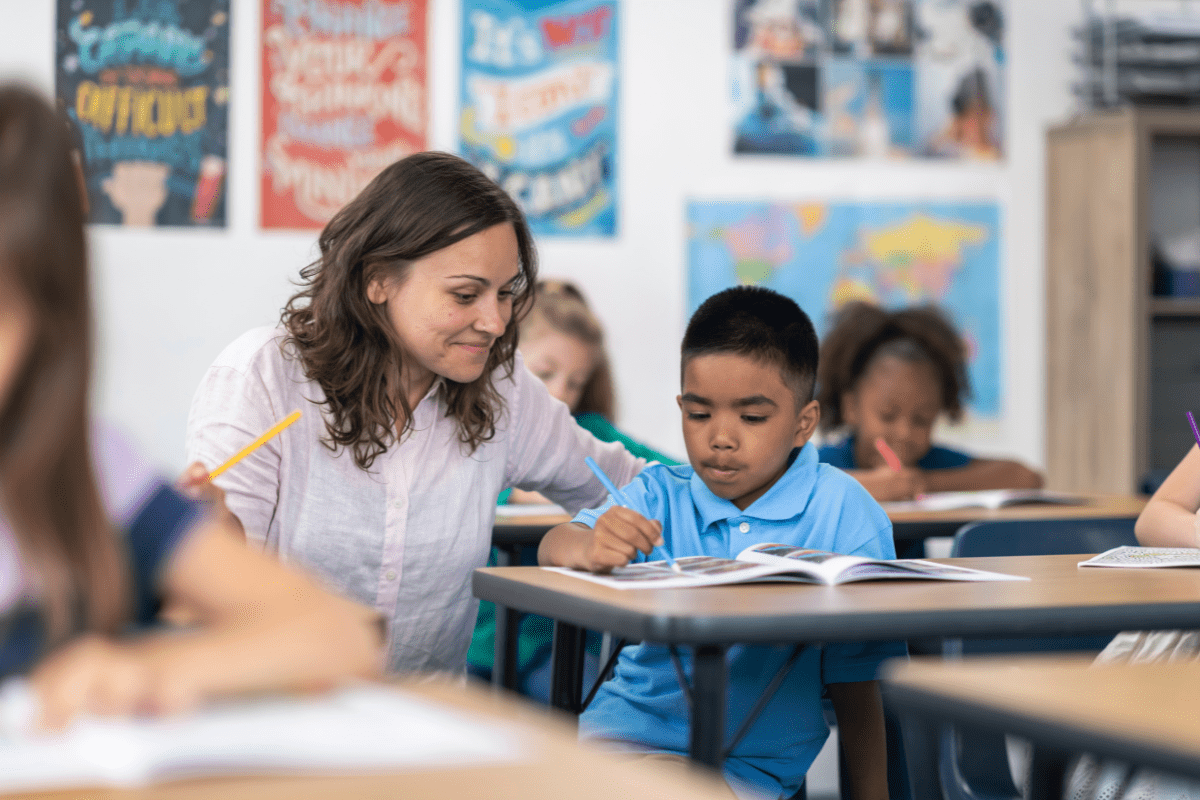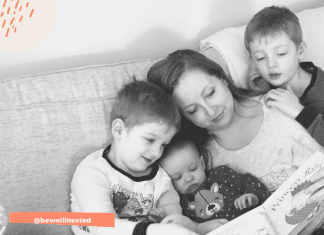
When I was a first grade teacher, I often wondered what it was like to be on the other side of education — the side of the parents and families. I worked with dozens of children over the years, and I will admit I sometimes felt guilty for teaching and not having my own children. Could I truly understand the family’s perspective if I didn’t have parenting experience? Fast forward to now — some years, a pandemic, and two kids later, and I am currently a stay-at-home mom who admittedly gets a little nostalgic during back-to-school time.
My first baby recently started school, so my position has now flip flopped. I am the family on the other side of this brand new school year. And I’ve thought a lot about how I can build a strong relationship with my child’s teacher to ensure not only a great year of learning but lay the foundation for the beginning of my child’s school career. Here are 10 ways to help parents build partnerships with teachers that will set up any child for success.
1. Remember, teachers and families are partners on the same team with the same goal: to help children grow and learn.
2. Try to switch your mindset away from, “Oh, the teachers have my kids from 8-2, and whatever happens there stays there.” Because the teachers are thinking, “After school hours, there is still learning that can be done and connections to be made!” Teachers care just as much about what happens to your children outside of the classroom as they do about the school day.
3. A teacher’s impact can last forever. However, the constant in a child’s life is their family. Teachers change by the year. Family is forever. You are the driving force to give them the tools they need to build on whatever they learn in school.
4. Lots of schools have designated room parents, but I always welcomed parents to come in to the classroom anytime it fit in their schedule. I understand this doesn’t work for everyone’s schedule or for every school, but check in with your teachers! An hour helping out, reading, or even just hanging out in the classroom can help build a great relationship.
5. Don’t wait to check in when there’s a problem. As a teacher, I loved nothing more than sending out my “good news” emails, like, “Jessica helped a friend today who was having a hard time. I wanted to let you know you are doing a great job at home teaching Jessica to be kind. Make sure you talk to her about this tonight!” Similarly, teachers love to hear from parents about positive moments and conversations about school that happen at home. Don’t only reach out to your child’s teacher when you are upset. I promise that teachers, in return, will try to deliver only the best news they can.
6. A common misconception is that teachers expect parents to do too much at home. In my teaching years, I had many parents tell me they just didn’t have the time to do anything “academic” with their children at home. The expectation is not for the children to go home and continue to be taught. The expectation is for parents to help build a bridge to learning. This bridge does not need to be time consuming or complicated.
7. Read with your child every day — even 15-20 minutes a night is plenty. You can read a book to your child or have your child read to you. Even if your child isn’t a reader yet, they can flip through the pages and use the clues in the pictures to talk about what they think the story might be about.
8. Find out what your children are learning in school, and make those connections while you are out and about in the world. The grocery store is a great place to learn about greater than, less than, and equal to. Ask, ”Which box of cookies costs more? Less?” This makes learning tangible. This also shows that what you learn in school really is important in day-to-day life.
9. Swap out the old open-ended questions like, “How was school today?” “What did you learn today?” These can seem too vast and overwhelming for children to answer. Instead, try giving choice questions. “What did you find more challenging today, math or reading?” Or, “What special did you have today, P.E. or art?” Start small and specific to ease your child into the conversation.
10. Remember that everyone is doing the best they can. Teachers, parents, and kids are humans who make mistakes. Be gentle. Be understanding. Be gracious. At the end of the day, teachers and parents both have their eyes on the same prize — their children’s education and well being!
 Gia is a native of Milton, MA. After attending Providence College for a degree in business management, she followed her lifelong dream of moving to New York City. She went back to school to become a teacher and obtained her master’s in early education while becoming a part of the staff as a founding teacher of a new charter school in Brooklyn. Gia eventually made her way back to MA, taking on a role as an ESL teacher at an elementary school in Somerville. While Gia is no longer in the classroom, she has two of the most adorable co-workers in her most challenging but favorite job yet, stay-at-home mom to her son and daughter. Gia loves all things music, primarily live music, karaoke, and playing the drums. Gia also enjoys reading, manically decluttering, planning parties, and all things 90s.
Gia is a native of Milton, MA. After attending Providence College for a degree in business management, she followed her lifelong dream of moving to New York City. She went back to school to become a teacher and obtained her master’s in early education while becoming a part of the staff as a founding teacher of a new charter school in Brooklyn. Gia eventually made her way back to MA, taking on a role as an ESL teacher at an elementary school in Somerville. While Gia is no longer in the classroom, she has two of the most adorable co-workers in her most challenging but favorite job yet, stay-at-home mom to her son and daughter. Gia loves all things music, primarily live music, karaoke, and playing the drums. Gia also enjoys reading, manically decluttering, planning parties, and all things 90s.













